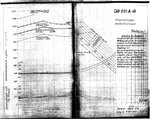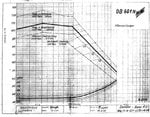Navigation
Install the app
How to install the app on iOS
Follow along with the video below to see how to install our site as a web app on your home screen.
Note: This feature may not be available in some browsers.
More options
You are using an out of date browser. It may not display this or other websites correctly.
You should upgrade or use an alternative browser.
You should upgrade or use an alternative browser.
He-100D weight
- Thread starter Piper106
- Start date
Ad: This forum contains affiliate links to products on Amazon and eBay. More information in Terms and rules
More options
Who Replied?Many thanks for the feedback, krieghound.
That would mean that He-100D was having, at 4,5 km, 1020 PS, contrary to the Bf-109F1/F2 having, at 4,9 km, 1170 PS. Under significant power deficit, it was faster. It was as fast as the F-4 in 1941 (a further 40 PS deficit for the Heinkel), while the 601M engine was available in 1938/9.
One might wonder how fast the He-100 would be with the 601N or E aboard.
That would mean that He-100D was having, at 4,5 km, 1020 PS, contrary to the Bf-109F1/F2 having, at 4,9 km, 1170 PS. Under significant power deficit, it was faster. It was as fast as the F-4 in 1941 (a further 40 PS deficit for the Heinkel), while the 601M engine was available in 1938/9.
One might wonder how fast the He-100 would be with the 601N or E aboard.
I think we can put the "D" model to rest if you refer to post #15 in this thread.
The conventional radiator costs about 30 to 50 MPH in speed. The Ki-61 test bed for the Ki-64 was reported to be able to fly at 391 mph with the evaporative cooling system. Apparently the aircraft had 35 successful flights to prove the system for the Ki-64. It had the advantage of a larger wing with larger evaporative coolers.Since the Ki-61's engine retained the steam separators of the He100 and mounting system it seemed an easy conversion. (proof that that some of the Ki-61's inspiration was of the He100 and not the Bf109)
This is an example of the proof of concept of the evaporative system. Heinkel had plans to enlarge the wing and the coolers would have looked like the arrangement on the Ki-61 testbed.
The conventional radiator costs about 30 to 50 MPH in speed. The Ki-61 test bed for the Ki-64 was reported to be able to fly at 391 mph with the evaporative cooling system. Apparently the aircraft had 35 successful flights to prove the system for the Ki-64. It had the advantage of a larger wing with larger evaporative coolers.Since the Ki-61's engine retained the steam separators of the He100 and mounting system it seemed an easy conversion. (proof that that some of the Ki-61's inspiration was of the He100 and not the Bf109)
This is an example of the proof of concept of the evaporative system. Heinkel had plans to enlarge the wing and the coolers would have looked like the arrangement on the Ki-61 testbed.
Attachments
davebender
1st Lieutenant
Why didn't Heinkel build a few prototypes that way? Seems simple enough to do given the number of He-100 prototypes.
V1 prototype has historical cooling system.
V2 prototype has conventional radiator.
V3 prototype has historical cooling system.
V4 prototype has radiator.
etc.
In fact there were enough prototypes that Heinkel could have experimented with different radiator installations. One prototype might have wing radiators similiar to Me-109. Another prototype might have an annular radiator. After some flight tests Heinkel would pick the best design and present it to RLM for their "2nd iron in the fire".
V1 prototype has historical cooling system.
V2 prototype has conventional radiator.
V3 prototype has historical cooling system.
V4 prototype has radiator.
etc.
In fact there were enough prototypes that Heinkel could have experimented with different radiator installations. One prototype might have wing radiators similiar to Me-109. Another prototype might have an annular radiator. After some flight tests Heinkel would pick the best design and present it to RLM for their "2nd iron in the fire".
After a careful review of all the published docs and pictures I have I believe the coolant systems can be best described this way
V1 originally produced with evaporative system - prototype retractable auxiliary radiator installed at later stage
V2 originally produced with revised evaporative system - revised prototype auxiliary retractable radiator installed at later stage
V3 originally produced with modified evaporative system for different wing geometry - no auxiliary retractable radiator
V4 originally produced with definitive evaporative system and retractable auxiliary radiator
V5 thru V10 and series I II the same as V4 arrangement
Series III has a modified V4 arrangement but change primarily to the oil cooler and the only version with increased fuel capacity.
Contrary to some publications all He100's were produced with the evaporative system.
There is an interesting drawing of a possible Japanese version (production?) with a fixed radiator system possibly for the oil cooler as the evaporative system is still installed.
V1 originally produced with evaporative system - prototype retractable auxiliary radiator installed at later stage
V2 originally produced with revised evaporative system - revised prototype auxiliary retractable radiator installed at later stage
V3 originally produced with modified evaporative system for different wing geometry - no auxiliary retractable radiator
V4 originally produced with definitive evaporative system and retractable auxiliary radiator
V5 thru V10 and series I II the same as V4 arrangement
Series III has a modified V4 arrangement but change primarily to the oil cooler and the only version with increased fuel capacity.
Contrary to some publications all He100's were produced with the evaporative system.
There is an interesting drawing of a possible Japanese version (production?) with a fixed radiator system possibly for the oil cooler as the evaporative system is still installed.
Attachments
Users who are viewing this thread
Total: 1 (members: 0, guests: 1)




